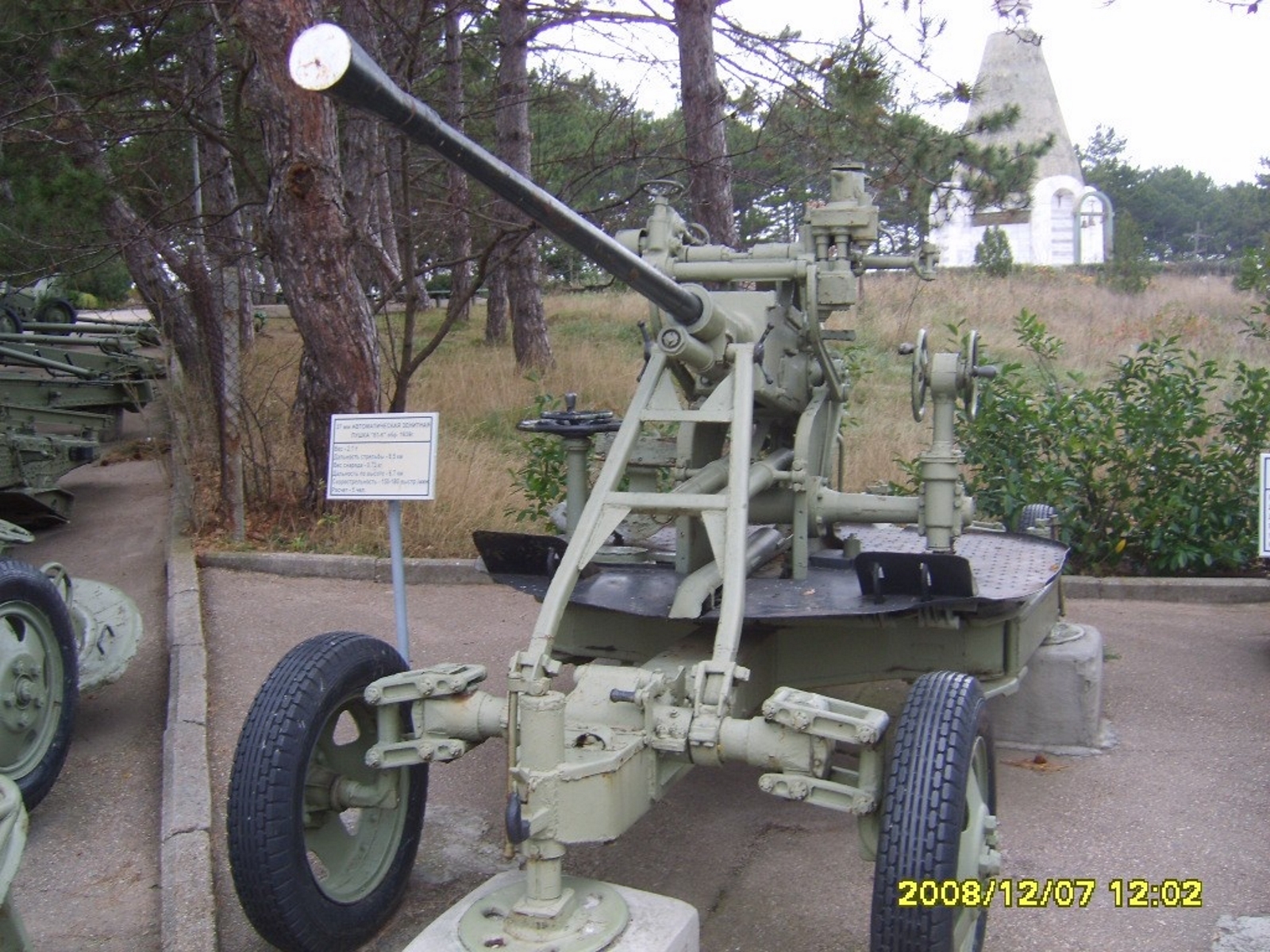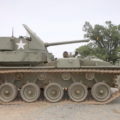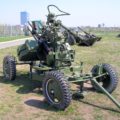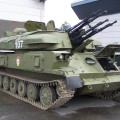
Cannone antiaereo da 37 mm | |
|---|---|
| Paese | Unione Sovietica |
| digitare | Pistola per la difesa aerea |
| Periodo | 1939-1945 |
| Costruito | 20.000 |
Cannone automatico di difesa aerea da 37 mm M1939 (61-K) (russo: 37-мм автоматическая зенитная пушка образца 1939 года (61-К)) era un cannone antiaereo sovietico calibro 37 mm sviluppato durante la fine degli anni 1930 e utilizzato durante la seconda guerra mondiale. La versione terrestre fu sostituita in servizio sovietico dallo ZSU-57-2 durante gli anni '50. Cannoni di questo tipo furono usati con successo in tutto il fronte orientale contro bombardieri subacquei e altri bersagli a bassa e media altitudine. Aveva anche una certa utilità contro bersagli terrestri leggermente corazzati. Equipaggi dei cannoni AD da 37 mm abbattuti su 14.657 aerei dell'Asse. La quantità media di munizioni da 37 mm per abbattere un aereo nemico era di 905 colpi.
fonte: 37mm M1939 su Wiki
| Cannone antiaereo da 37 mm Walk Around | |
|---|---|
| Fotografo | Verwolf |
| Localizzazione | Inconsapevole |
| Foto | 16 |
Kit correlati:
Trova kit su eBay:
Vedi anche:
Il cannone antiaereo da 37 mm era un tipo di arma utilizzata da vari paesi durante la seconda guerra mondiale. È stato progettato per abbattere aerei nemici a basse e medie altitudini, utilizzando proiettili ad alto esplosivo o perforanti. Il calibro da 37 mm è stato scelto perché offriva un buon equilibrio tra peso, velocità alla volata, cadenza di fuoco e precisione. Diversi modelli di cannoni antiaerei da 37 mm sono stati prodotti da Germania, Stati Uniti, Romania e Unione Sovietica, ognuno con le proprie caratteristiche e prestazioni. Alcuni degli esempi più notevoli sono:
– The 3.7 cm Flak 18/36/37, developed by Rheinmetall in Germany, was a fully automatic gas-operated cannon that could fire up to 160 rounds per minute. It had a three-legged platform mount that allowed 360 degrees of traverse and a maximum elevation of 85 degrees. It was used by the German army and air force, as well as by Romania and Bulgaria.
– The 37 mm gun M1, developed by John M. Browning and Colt in the United States, was an anti-aircraft autocannon that could fire up to 120 rounds per minute. It had a four-wheeled trailer mount that allowed 360 degrees of traverse and a maximum elevation of 90 degrees. It was used by the US army and navy, as well as mounted on half-tracks and PT boats.
– The 37 mm automatic air defense gun M1939 (61-K), developed by the Soviet Union, was an anti-aircraft autocannon that could fire up to 80 rounds per minute. It had a two-wheeled carriage mount that allowed 360 degrees of traverse and a maximum elevation of 85 degrees. It was used by the Soviet army and navy, as well as by China and North Korea.
– The 37 mm gun M3, developed by the United States, was the first dedicated anti-tank gun fielded by US forces in numbers. It could fire up to 25 rounds per minute, using armor-piercing shells that could penetrate up to 25 mm of sloped armor at 500 yards. It had a split-trail carriage mount that allowed 60 degrees of traverse and a maximum elevation of 15 degrees. It was used by the US army and marines, as well as by Britain and France.
Il cannone antiaereo da 37 mm ha svolto un ruolo importante nella seconda guerra mondiale, fornendo difesa aerea e supporto terrestre per vari eserciti e marine. Era efficace contro aerei a bassa quota, carri armati leggeri, veicoli corazzati e bersagli di fanteria. Tuttavia, ha anche affrontato limitazioni come la portata limitata, la bassa precisione ad alta quota, la vulnerabilità al fuoco di controbatteria e l'obsolescenza dovuta allo sviluppo di cannoni più potenti e aerei più veloci.
Views : 4363






Nuovo